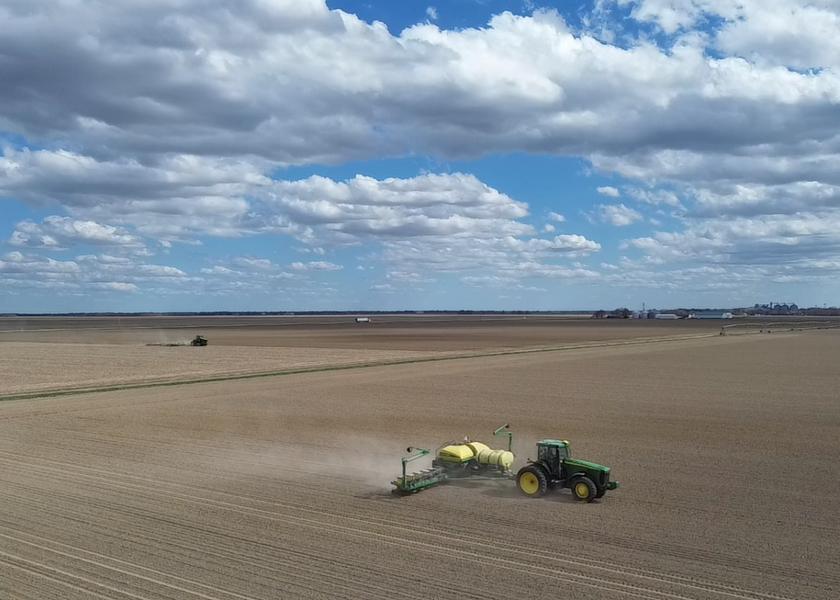USDA's Crop Progress Report Shows Corn Planting is Slightly Ahead of Last Year

The forecast in April and early March was dominated by cold temperatures, as well as rain and snow. USDA’s April 10 Crop Progress report confirms planting is just getting started across the Corn Belt. Forecasts show milder temperatures and dry weather, so planting progress could speed up this week.
USDA's second planting progress report of the season shows as of April 9, 3% of the nation's corn crop was planted, which is up 1 percentage point from last week, last year and the five-year average.
The state-by-state breakdown shows:
- 61% of Texas' corn is in the ground, 3 percentage points ahead of the five-year average
- 12% of North Carolina's corn crop is planted, 2 points behind average
- 7% of the corn crop is Missouri is planted, 4 points ahead of the five-year average
- 6% of the crop in Kansas is in the ground, up 2 points from average
Cotton is 6% planted, a 2 percentage point jump from last week, but that's 1 point behind the average planting pace.
Planting Picks Up Pace
More planters are starting to roll this week with the drier weather. Farm Journal Field Agronomist Ken Ferrie says farmers in central Illinois are seeing agronomic conditions favorable to start the planting process for corn and soybeans both this week.
#plant23 has begun in west central IL pic.twitter.com/QiOTgaUtvQ — Justin Martin (@jmartin_7) April 10, 2023
There are still areas of the Corn Belt that could see rains, but the heaviest rainfall is forecast to hit the areas surrounding the Gulf of Mexico. AgDay's forecasts shows where planting could be put on pause throughout the week.
Winter Wheat Crop Conditions Struggle
The U.S. winter wheat crop continues to show issues due to the dry weather across the Plains. According to USDA, 27% of the winter wheat is rated good to excellent, down 1 percentage point from last week, and 37% is rated poor to very poor. Here are some key numbers:
- 61% of the winter wheat crop in Kansas is rated poor to very poor
- 47% of the crop in Texas is in poor to very poor condition
- 46% Oklahoma is rated poor to very poor
The poor wheat conditions in the Plains has caught the eye of Kansas City wheat prices, according to Chip Nellinger of Blue Reef Agri-Marketing.
"The Kansas City market has taken note of the weather in the Plains, but the Chicago market is where most of the fund and money flow comes in," says Nellinger. "They haven't quite cared yet about the Russian situation or this weather in the Plains. They've got a big short position on, and all you need is to keep this weather on the dry side well into April and the first half of May, and I think that you've got the spark for a nice rally potentially in this wheat market."
Planting Time Grain Marketing Opportunities?
While there is a lot of changing variables around the globe, along with weather moving the markets in the U.S., Nellinger reminds producers that spring planting may be a hectic time, but they shouldn't lose sight of marketing opportunities as they hit the fields.
“Oftentimes when it's busiest is when there are opportunities in the market,” says Nellinger. “Don't take your eye off the ball here. These markets have been very volatile, there are going to be opportunities ahead of us at profitable levels, but we just have to have a plan and be ready to execute it when we see those opportunities.”
Related Stories:
Ferrie: Off to the Planting Races for Corn and Soybeans
The Great Debate: What's the Ideal Row Spacing for Planting Soybeans?
Spraying Early Before Weeds Even Sprout Can Be One of the Most Difficult Changes for Farmers
The Market Will Be Focusing On Planting Pace In The Dakotas
Get Ready, Volatility in the Commodity Markets is Just Getting Started







